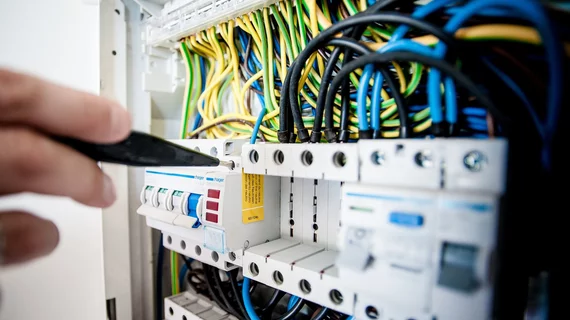The COVID crisis has swollen the demand for repairs to hospitals’ overworked medical equipment at the same time it has, in effect, shrunken the field of qualified repair workers.
The gap largely owes to the manufacturers of the original equipment, aka OEMs. These powerful players are restricting travel for their maintenance and repair technicians due to the pandemic. Yet they’re simultaneously using licensing contracts, copyright laws and other means to keep some unintentional competitors—namely hospitals’ in-house clinical engineering departments—from doing the work.
That’s according to an opinion piece published Oct. 12 in Slate.
One of the article’s two authors is Ron Wyden, a Democratic senator from Oregon who introduced legislation to break the impasse in early August.
The other is Ilir Kullolli, who directs the care of medical equipment at Stanford Children’s Hospital and is the current president of the American College of Clinical Engineering.
The pair has taken to the pages of Slate as a way of urging Congress to pass Wyden’s bill, the Critical Medical Infrastructure Right-to-Repair Act, “as part of the next COVID-19 relief package, whenever election-season gridlock ends,” Wyden and Kullolli write. “This commonsense legislation would allow trained repair technicians to more easily access the information and tools they need to fix and maintain critical medical infrastructure during the COVID-19 crisis.”
Wyden and Kullolli cite a national survey conducted by the Denver-based U.S. Public Interest Research Group Education Fund in July. At that time almost a third of biomedical repair technicians indicated that some medical equipment in their hospitals was out of commission due to unmade repairs.
The survey takers also found almost half these technical professionals had been denied access to “critical repair information, parts or service keys” during the pandemic.
“Denying sick people access to life-saving equipment over a repair manual is about as short-sighted as it gets,” Wyden and Kullolli write.
They underscore that the equipment waiting for attention isn’t limited to devices used for COVID-related care.
“[P]reventative maintenance on all kinds of devices has fallen behind because manufacturer certified technicians were unavailable,” Wyden and Kullolli write. “Everything from imaging equipment like MRI, CT, X-ray and ultrasound machines, to anesthesia machines, heart-lung machines and other surgical equipment” have been affected.
Read the whole thing.

